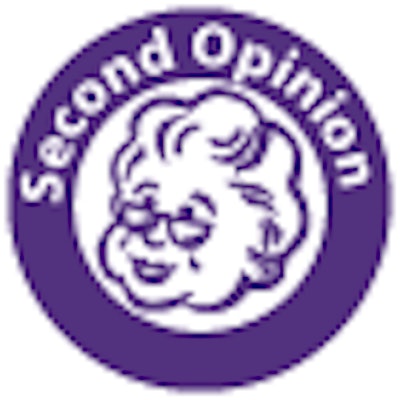

The White House Medicare fact sheet calls for increasing the utilization factor, a key part of the payment formula for the technical component of imaging services, from 50% to 95%, and a bill recently introduced in the House calls for an increase to 75%. At the same time, the Centers for Medicare and Medicaid Services (CMS) has proposed increasing the utilization factor to 90% beginning in 2010. These proposals would reduce the technical component reimbursement by approximately 20% to 45% if any of them are enacted into regulation or law.
The basis for these proposals is a study from the Medicare Payment Advisory Commission (MedPAC) titled "Paying Accurately for Imaging Services in Medicare" that was presented in November 2008 at a public meeting of MedPAC and later included in the March 2009 MedPAC report to Congress.
The recommendations in this report are based on a study commissioned by MedPAC and performed by the National Opinion Research Center (NORC) during 2006, titled "Survey of Imaging Centers: Use of MRI and CT Equipment in Five Markets." (The study was actually conducted in six markets.) This survey collected data from only 80 locations. MedPAC reported that increasing the utilization factor to 90% based on this study would result in a savings of $900 million per year for the Medicare system.
There have been many criticisms of this MedPAC recommendation. For example, the Radiology Business Management Association (RBMA) conducted its own more extensive survey on this topic, which was released in June of 2009. The RBMA study was conducted in 46 centers, with 261 responses, and found that rural imaging centers operate 46% of the time and nonrural centers operate 56% of the time.
The RBMA also commented that the NORC survey was conducted before the Deficit Reduction Act (DRA) of 2005 went into effect in 2007 and, therefore, does not consider the impact of this reduction in reimbursement. Other published comments on the MedPAC recommendation call for improved and more extensive studies, and also ask for fair payment for outpatient imaging based on studies that clearly measure utilization and outcomes.
No editorial or study that we have reviewed to date has examined the details of the NORC report that was the basis for the MedPAC recommendation. In our experience in the evaluation or management of more than 100 imaging centers over the past 12 years, we have rarely seen a center that operates above a 70% efficiency level on a sustained basis. Our experience is very consistent with the results reported by the RBMA earlier this year.
Flaws in the NORC study
Based on the incongruity between our experience and the MedPAC recommendation, we decided to review the NORC study to gain a better understanding of it. We reviewed the survey questions and the basic design of the study in some detail.
The major shortcoming of the study is not in survey design or data analysis. However, the study has two major mistakes that affect the utility of the MedPAC report as the basis for reducing reimbursement for advanced diagnostic imaging services. The study is composed of 13 questions, and it collects information about the hours of operation, the age of systems in use, and the number of systems a private practice or an independent diagnostic testing facility (IDTF) operates.
The most critical questions were numbers 4 and 6, which asked approximately how many hours each week MRI and CT scanners are in use. These questions are the major flaw in this study. Questions 8, 9, and 10 asked about when the respondent's imaging center is open for business by the day, week, and year. These last three questions provide an understanding of each respondent's annual hours of operation.
We believe the MedPAC analysts who designed the study were extremely focused on collecting data on the amount of time that systems are in use in a normal imaging center operation, and then comparing that to the hours of operation. By doing so, they may have believed that they could make a direct calculation of the efficiency of operation for the respondents. This, in turn, could then provide a direct comparison of actual operation efficiency to the assumption of the payment formula.
It is extremely important to understand that this is not the way imaging centers calculate efficiency. Imaging center operators calculate their efficiency of operation based on the number of studies done versus the number of scheduling slots that they have each day. The study's major -- yet very simple -- disconnect is that it does not include any questions about the volume of tests done at participating imaging centers for either MRI or CT.
In fact, the survey does not include any questions related to volume of any sort that could validate or improve the precision of the recommendations made by the study. Questions 4 and 6 ask for how many hours equipment is operated each week. Imaging centers do not normally keep records on actual time of operation. They keep records on the actual number of tests that they perform.
In other words, the answers to these two questions could only be guessed or estimated by the respondents to the survey. In fact, it is entirely possible that these two questions could have been completely misconstrued to be testing questions about the hours that each respondent's center is open for business.
Our analysis is supported by the "results" section of the NORC report, which states "Responses to this question varied widely. For MRI scanners operated by physician groups, the number of hours that each machine was in operation ranged from a low of eight hours to a high of 98 hours per week. IDTFs reported using each MRI machine from a low of 30 hours per week to a high of 100 hours per week." This variation may be due to testing volume variations as the NORC report suggested; however, it is much more likely that it is due to the lack of precision of the question and the interpretation required by the respondents to provide an answer.
The second important flaw of the study is that it does not ask the job function of each respondent. Therefore, we do not know the position of each person who responded to the survey. They could have been the center owner, manager, receptionist, medical director, technician, or another staff member. Knowing who answered the questionnaire would also have been a measure of the quality of the study.
The need to reduce costs
It clearly is important that the cost of healthcare be reduced in the U.S. for reasons that have been reported in many studies and publications. It is also true that imaging costs have grown faster than any other Medicare healthcare cost from 1999 to 2006, making imaging a target for analysis and payment reduction.
As we consider ways to reduce healthcare costs while maintaining the quality of the services that we provide in the U.S., we should keep in mind the measures that are already in place to control imaging cost.
The DRA fee schedule was introduced on January 1, 2007. This measure reduced the technical component for advanced diagnostic imaging system studies by up to 40%. Based on this change in reimbursement, the U.S. Government Accountability Office reported a 12.7% reduction in expenditures for imaging services for 2007 when compared with 2006, which resulted in a savings of nearly $1.8 billion for the Medicare system for that year. The DRA has effectively reduced the growth rate for MRI and CT services for Medicare beneficiaries generally without affecting their access to these services.
Further large reductions such as those in the current CMS and legislative plans will reduce access to high-quality imaging services in the future. Providers of advanced diagnostic imaging services who have the newest equipment operate very high fixed-cost businesses. The costs of equipment, healthcare IT in the form of their RIS and PACS software, as well as their monthly maintenance costs, make the fixed-cost component of their cost structure exceed 60% of operating costs.
If the utilization factor is increased by regulation or legislation to the levels discussed, many imaging centers will be forced to close, especially those with the newest and best imaging equipment. The imaging centers that will survive are those with the lowest fixed cost -- the facilities with the oldest equipment that have no equipment lease expenses. There will also be no incentive to upgrade to newer equipment based on these lower reimbursement rates.
In addition to the savings currently provided by the DRA, we should remember the requirements of the Medicare Improvements for Patients and Providers Act (MIPPA) of 2008. This law requires CMS to conduct a two-year demonstration project beginning in 2010. This project has the potential to demonstrate methods of reducing the cost of Medicare imaging services without impacting the technical component payment level. The project will evaluate the application of imaging standards and point-of-service and point-of-order online systems to approve imaging scans that have been prescribed based on standards developed by medical societies.
Allowing the MIPPA study to go forward, with the implementation of online approval without reducing reimbursement levels, will less drastically affect imaging centers over the long run. The results of this study have the potential to generate savings that are larger than those projected by the MedPAC recommendation, which is based on a study of imaging services that simply asked the wrong questions to a very small group of providers.
Another important consideration is that with all of its growth over the years from 1999 to 2006, imaging has grown to only approximately 5% of our annual Medicare cost. While this is a small percentage, it is still important to develop measures like those contemplated in the MIPPA law to reduce tendencies toward overutilization.
It is also important to note that while there have been many studies of the growth in cost for imaging services, there are virtually no studies that evaluate both the savings and quality-of-care improvements that have been generated by the introduction and expansion of advanced diagnostic imaging over the past 20 years.
In the period that is normally studied for the rapid growth in imaging expense from 1999 to 2006, more than 20 significant imaging products have been introduced that clearly improved the utility and quality of advanced diagnostic imaging. Because there is virtually no data on the value of imaging based on peer-reviewed studies of the improvements in care brought about by these services, it is very possible that reducing reimbursement will result in drastic, unintended consequences. These changes will most likely reduce access for Medicare beneficiaries and will cause high-quality imaging centers with the best and newest equipment to fail.
Before considering additional reductions in reimbursement for MRI and CT services, we should allow the MIPPA study to proceed to collect data about the use of medical standards to control imaging testing volume. This effort could provide larger future savings for the Medicare system than those projected by the MedPAC study that is the basis for the current proposed reductions. The NORC study should be redesigned to collect data on testing volumes and scheduling capacity so that future recommendations to adjust reimbursement can be made in a fair and equitable way.
Basing reimbursement reductions on studies that have not collected the data necessary to make a reasonable recommendation is unfair to all of the IDTFs and private practices that have invested millions of dollars in their imaging operations to try and provide the best imaging services for their patients. The proposed reductions for MRI and CT imaging services should be tabled, and an appropriately designed study should be conducted to determine if changes in payment beyond those implemented as a part of the DRA should actually be considered.
By Edward C. Eichhorn
AuntMinnie.com contributing writer
August 11, 2009
Edward C. Eichhorn is president of Medilink Consulting Group, which provides healthcare management services for the radiology market. He can be reached at [email protected].
The comments and observations expressed herein do not necessarily reflect the opinions of AuntMinnie.com, nor should they be construed as an endorsement or admonishment of any particular vendor, analyst, industry consultant, or consulting group.
Related Reading
Medicare's equipment utilization rate: What it means for radiologists, July 14, 2009
CMS pitches 90% use rate in proposed 2010 MPFS rule, July 1, 2009
Radiology rallies to fight more reimbursement cuts, July 1, 2009
ACR lobbies against RBMs, utilization rate changes, June 26, 2009
U.S. House bill would increase utilization factor to 75%, June 23, 2009
References
Data: Actual imaging use far below president's rec. 95 percent utilization rate for Medicare. PHYSorg.com. June 19, 2009.
Medicare Payment Advisory Commission. Report to the Congress -- Medicare payment policy. March 2009:105-110.
NORC 2006. Survey of imaging centers: Use of MRI and CT equipment. Report to MedPAC. May 2006.
U.S. Government Accountability Office (GAO). Report number GAO-08-1102R: Medical imaging payments. September 26, 2008.
Viviano PS. 2009 MedPAC report: A new threat to high-quality care. ImagingBiz.com. June 2009;4(6).
White House fact sheet on healthcare. http://www.whitehouse.gov/MedicareFactSheetFinal.
Winter A. Paying accurately for imaging services in the physician fee schedule. Medicare Payment Advisory Commission, public meeting, presentation. November 6, 2008.
Winter A and Ray N. Paying accurately for imaging services in Medicare. Health Policy. 1998;27(6):1479-1490.
Copyright 2009 © Edward C. Eichhorn



















